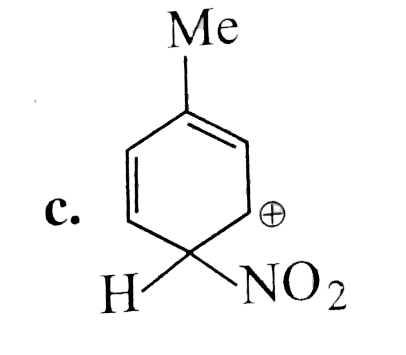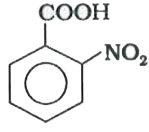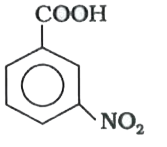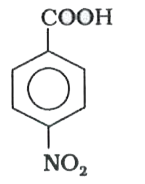Explore topic-wise InterviewSolutions in .
This section includes InterviewSolutions, each offering curated multiple-choice questions to sharpen your knowledge and support exam preparation. Choose a topic below to get started.
| 15201. |
The second ionisation potential of an element M is the energy required to |
|
Answer» REMOVE ONE mole of electron from one mole of gaseous anion |
|
| 15202. |
Which of the following compounds will not undergo decomposition on passing electricity through aqueous solution |
|
Answer» SUGAR |
|
| 15203. |
Which of the following procedures would be best for preparing isobutylisopropylamine, (CH_(3))_(2)CHNHCH_(2)CH(CH_(3))_(2)? |
|
Answer» `(CH_(3))_(2)CHBr+(CH_(3))_(2)CHCH_(2)NH_(2)` |
|
| 15204. |
This section contains Reasoning Type Questions. Each question contains STATEMENT-1 (Assertion) and STATEMENT-2 (Reason). Each question has 4. choices (A), (B), (C) and (D) out of which ONLY ONE is correctQSTATEMENT-1: The geometrical isomers of the complex [M(NH_(3)_(4)Cl_(2)]are opticallyinactive and STATEMENT-2: Both geometrical isomers of the complex [M(NH_(3))_(4)Cl_(2)] possess axis of symmetry. (A) STATEMENT-1 is True, STATEMENT-2 is True, STATEMENT-2 is correct explanation for STATEMENT:1 (B) STATEMENT-1 is True, STATEMENT-2 is True, STATEMENT-2 is NOT a. correct explanation for STATEMENT-1 (C) STATEMENT-1 is True, STATEMENT-2 is False (D) STATEMENT-1 is False, STATEMENT-2 is True |
|
Answer» |
|
| 15205. |
Which one of the following noble gases is the least polarizable |
| Answer» Solution :He is least polarizable because of SMALL ATOMIC SIZE. | |
| 15206. |
Thioalcohols are prepared by treating alkyl halides with : |
| Answer» Answer :A | |
| 15207. |
The solid PCl_5exists as ........ |
|
Answer» `PCl_3` |
|
| 15208. |
What is the use of CuSO_4 in kjeledahl's method ? |
|
Answer» Hydrolysing AGENT |
|
| 15209. |
White light consists of seven colours (VIBGYOR). If orange light is absorbed by a substance. What will be the colour of the substance and if blue is absorbed, what will be the colour and why ? |
| Answer» SOLUTION :If orange is absorbed, the SUBSTANCE will LOOK blue and if blue is absorbed, the substance will look orange. This is because orange and blue are complementary COLOURS. | |
| 15210. |
Which is most basic?Benzylamine,aniline,Acetanilide,p-Nitroaniline. |
|
Answer» Benzylamine |
|
| 15211. |
Which of the following is the most stable areonium or benzenium ion? |
|
Answer»
|
|
| 15212. |
Which is the most SO_2 polluted city |
|
Answer» Bombay |
|
| 15213. |
Vapour pressure of a solution containing non-volatie solute is: |
|
Answer» More than the VAPOUR PRESSURE of a solvent |
|
| 15215. |
Theunpleasantsmellingisocyanide isocyanideare also |
|
Answer» NITRILES |
|
| 15216. |
To which block is related an element having electronic configuration 1s^(2)2s^(2)2p^(6)3s^(2)3p^(6)3d^(10)4s^(1) in the periodic table |
|
Answer» s-block |
|
| 15217. |
The unit of ebullioscopic constant is _ |
|
Answer» `K KG "MOL"^(-1) " or " K ("MOLALITY")^(-1)` |
|
| 15218. |
Which stoichiometric defect increases the density of a solid ? |
| Answer» Solution :INTERSTITIAL defect increase the DENSITY of a SOLID. | |
| 15219. |
Which of the following undergoes hydrolysis ? |
| Answer» Answer :A | |
| 15220. |
Which of the following alcohols gives the best yield of dialkyl ether on being heated with a trace of sulpuric acid |
|
Answer» 2-pentanol PRIMARY ALCOHOLS READILY form ether when heated with CONC. `H_(2)SO_(4)`. |
|
| 15221. |
Whichof the followingreacts with Hinsberg reagentto froma product soluble in KOH. |
| Answer» Answer :A | |
| 15222. |
What is copolymerization? Give example. |
| Answer» Solution :It is a type of POLYMERISATION in which more than ONE type of monomers species are allowed to polymerise and to FORM a COPOLYMER. EX, Buna-N, Bakelite, Buna-S, Nylon-6,6. | |
| 15223. |
Which is less reactive? |
|
Answer» Fe |
|
| 15224. |
Which of the following species is/are isoelectronic to each other ? (I) overset(Θ)(B)H_(3) - C -= N (II) CH_(3) - C -= CH (III) N_(2)O |
|
Answer» I and II only |
|
| 15225. |
Which one of the following is not an additional polymer? |
| Answer» Solution :PVC | |
| 15226. |
Which group of elements lose electrons more readily ? |
| Answer» Answer :A | |
| 15227. |
Which one of the following is a second order reaction? |
|
Answer» `H_(2) + Br_(2) rightarrow 2HBR`<BR>`NH_(4)NO_(3) rightarrow N_(2) + 3H_(2)O` `H_(2) _CI_(2) rightarrow 2HCI` These are photochemical reactions, Order = zero.Decomposition of ammonium nitrate in a AQUEOUS solution is a first oreder reaction. `NH_(4)NO_(3) rightarrow N_(2) + 3 H_(2)O` Hydrolysis of ester by an alkali (saponification) is a second order reaction. `CH_(3)COOCH_(3) + NaOH rightarrow CH_(3)COONa + CH_(3)OH`. |
|
| 15228. |
Which of the following compounds will not show geometrical isomerism : |
|
Answer» Azomethane |
|
| 15229. |
Which of the followingis not a polyamide fibre |
|
Answer» NYLON -66 (a),(b),(C) are polyamide fibres. Silk is natural polyamide fibre. |
|
| 15230. |
Which one of the following compounds has the smallest bond anglein its molecule ? |
|
Answer» `OH_(2)` |
|
| 15231. |
When NH_(3) reacts with excess of F_(2), the products formed are |
|
Answer» `HF + NF_(3)` |
|
| 15232. |
Which of following is diamagnetic ? |
|
Answer» `[RhCl(CO)(P Ph_(3))(NH_(3))]` |
|
| 15233. |
Which of the following acids on heating loses a molecul of H_(2)O to form an alpha,beta-unsaturated acid? |
|
Answer» `CH_(3)CHOHCOOH` `CH_(3)overset(beta)(C)HOHoverset(alpha)(C)H_(2)COOH overset(heat)to CH_(3)CH=CHCOOH+H_(2)O` |
|
| 15234. |
Which of the following is present in maximum amount in acid rain ? |
|
Answer» `HNO_(3)` |
|
| 15235. |
Which of the following can adsorb larger volume of hydrogen gas? |
|
Answer» Finely divided NICKEL |
|
| 15236. |
Which of the following is called vitamin H ? |
| Answer» Answer :A | |
| 15237. |
When standard half-cell reduction potential of hydrogen would be negative ? |
|
Answer» `p(H_(2))=2` ATMOSPHERE and `[H^(+)]=1.0M` `H^(+)+e^(-) to (1)/(2)H_(2(g))("REDUCTION")` `E=E^(@)-(0.059)/(1)"LOG"([P_(H_(2))]^((1)/(2)))/([H^(+)])` `E=E^(@)-(0.059)/(1)"log"((2)^((1)/(2)))/(1)=-ve` |
|
| 15238. |
What is the other name of Halic(VII) acid ? |
|
Answer» Halic ACID |
|
| 15239. |
Which would be obtained by boiling CHCl_3 with caustic soda : |
|
Answer» `CH_3COONa` |
|
| 15240. |
Which one is an elimination reaction ? |
|
Answer» `CH_3CH_3 + Cl_2 rarr CH_3CH_2Cl + HCl` |
|
| 15241. |
What is the effect of i) Electron with drawing group on acidity of phenols. ii) Electron donating group on acidity of alcohols. iii) Boiling point of alcohols on increasing number of carbon atoms. |
|
Answer» Solution :i) Electron with drawing GROUP increase the acidity of PHENOLS. ii) Electron donating group decreases acidity of alcohols. III) BOILING point of alcohols increases on increasing number of carbon atoms. |
|
| 15242. |
Two glass bulbs A and B are connected by a very small tube having a stop cock. Bulb A has a volume of 100 ml and contained the gas while bulb B was empty. On opening the stop cock, the pressure fell down to 40%. The volume of the bulb B must be |
| Answer» ANSWER :C | |
| 15243. |
When SnCl_2 reacts with HgCl_2,the product formed are : |
|
Answer» `Sn+HgCl_4` |
|
| 15244. |
Which one of the following sets forms the biodegradable polymer ? |
|
Answer»
|
|
| 15245. |
Which of the following is weakest acid ? |
|
Answer»
|
|
| 15246. |
Which of the following compound will forms 2 isomeric oximes on reacting with NH_(2)OH ? |
|
Answer» RCHO |
|
| 15247. |
Which of the following statements are correct ? (i)Arsenic and antimony are metalloids. (ii) Phosphorus, arsenic and antimony are found (iii) covalent radii increases equally from N to Bi. (iv) Elements of group 15 have extra stability and higher ionisation energy due to exactly half filled ns^(2)np^(3) electronic configuration. (v) In group 15 elements only nitrogen is gas whereas all others are solids. |
|
Answer» i.iv and v |
|
| 15248. |
The strongest reducing agent among the following is : |
|
Answer» Ozone |
|
| 15249. |
Whichof the followingstatementis not trueabout(CH_(3))_(3)N? |
|
Answer» It'sIUPACnameis trimethanamine |
|
| 15250. |
Using the data given below find out the strongest reducing agent. E_(Cr_(2)O_(7)^(2-)//Cr^(3+))^(@) = 1.33 V, E_(Cl_(2)//Cl^(-))^(@) = 1.36 V E_(MnO_(4)^(-)//Mn^(2+))^(@) = 1.51 V, E_(Cr^(3+)//Cr)^(@) = -0.74 V |
| Answer» ANSWER :B | |









